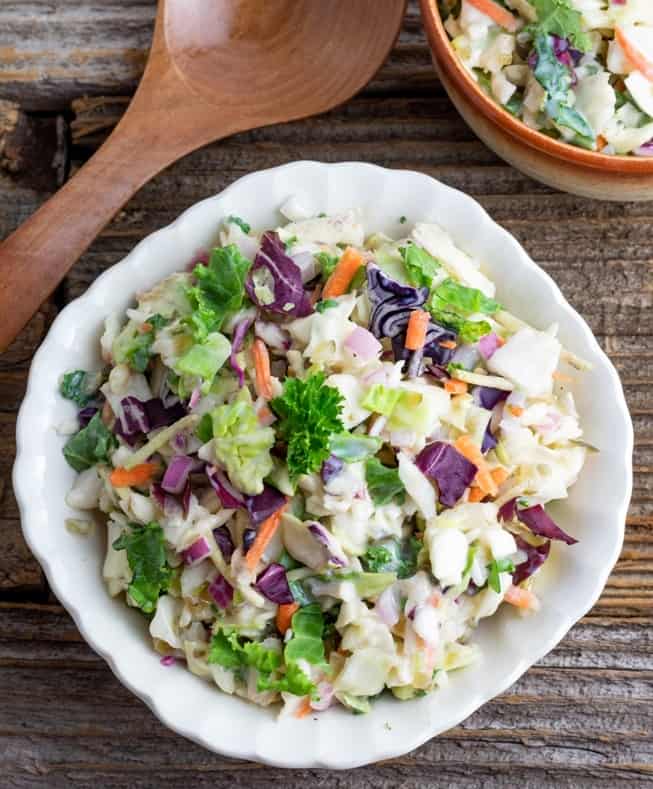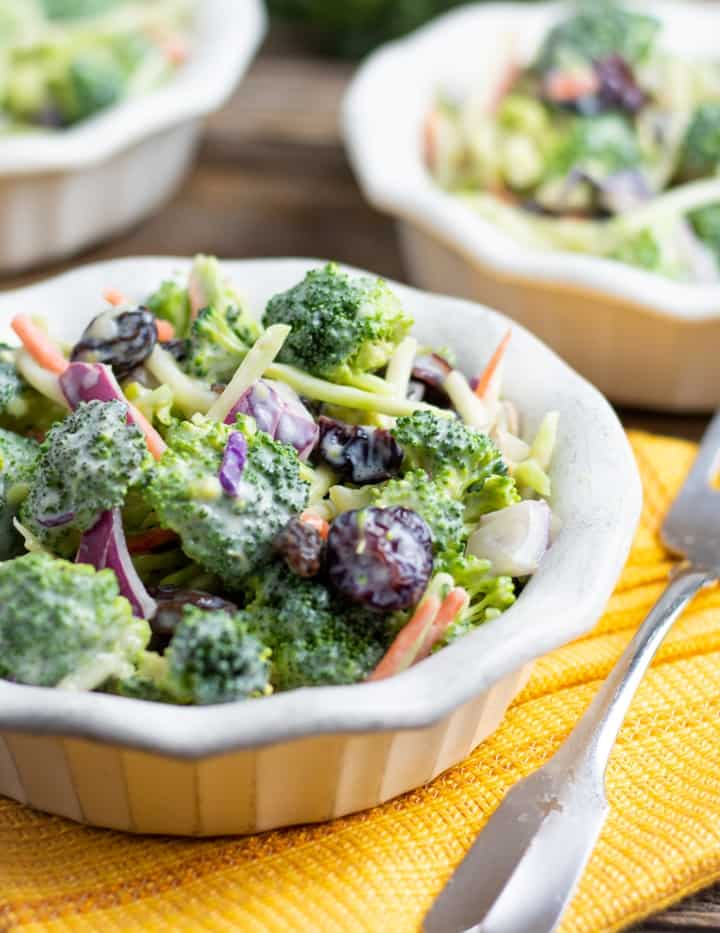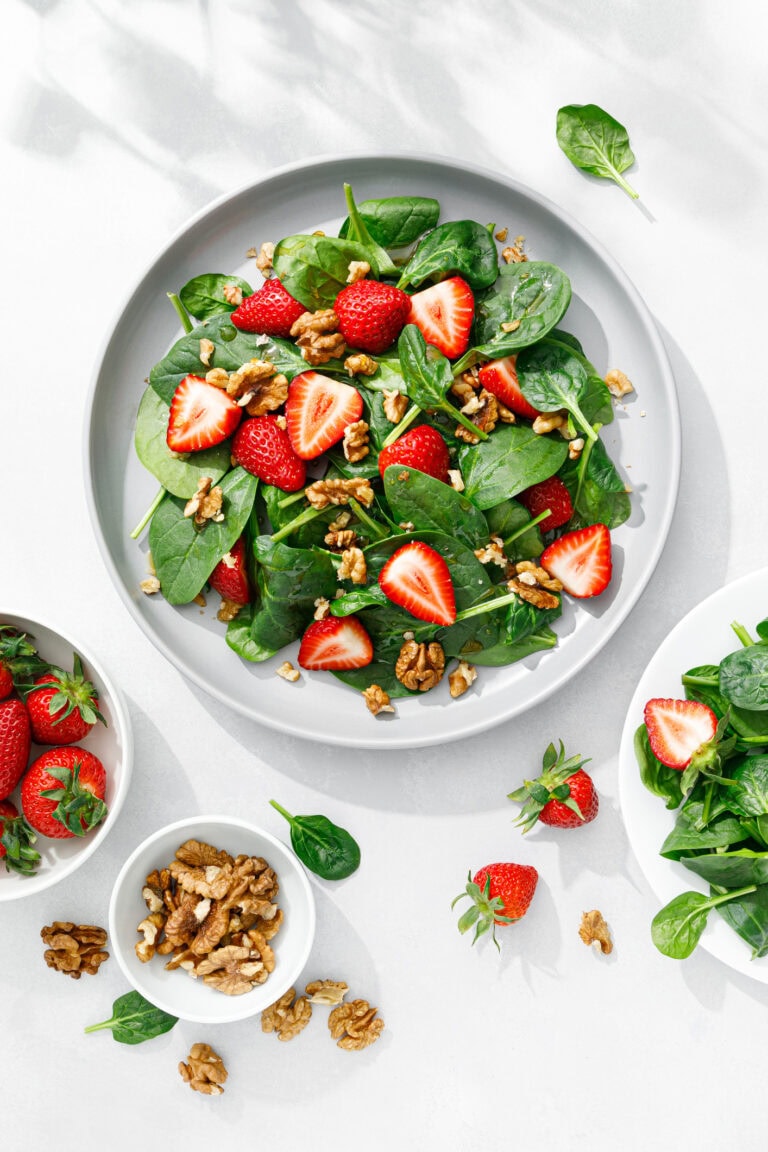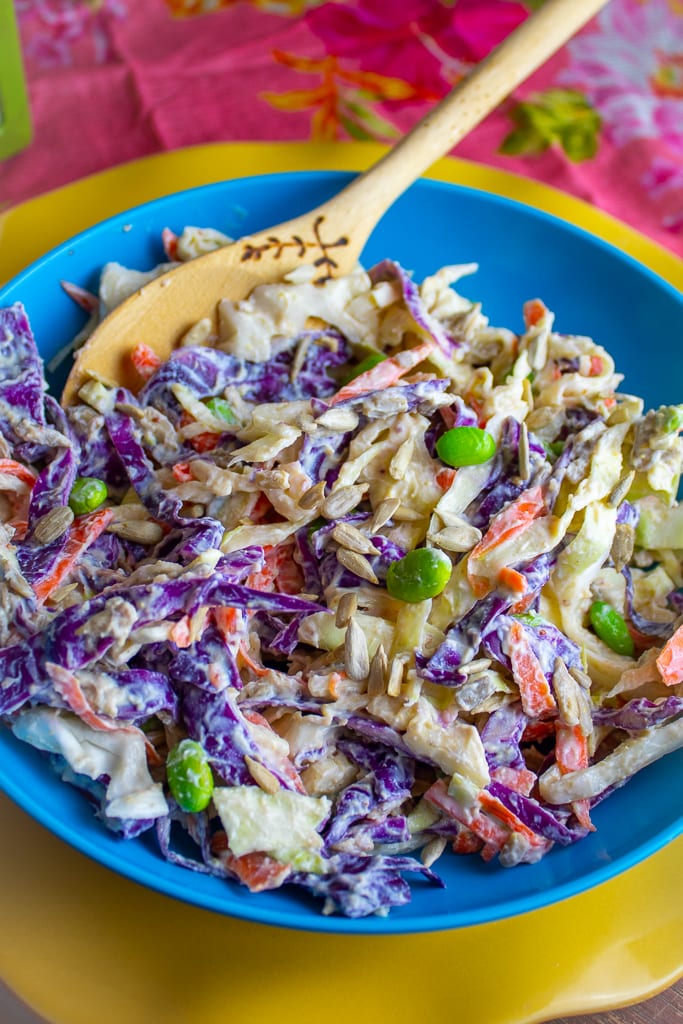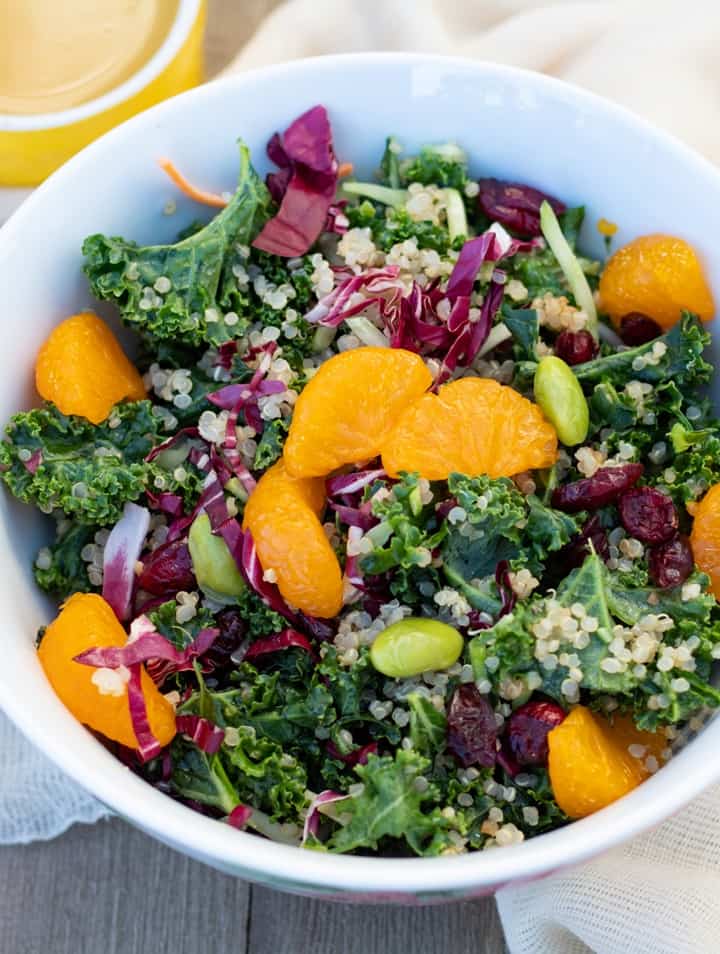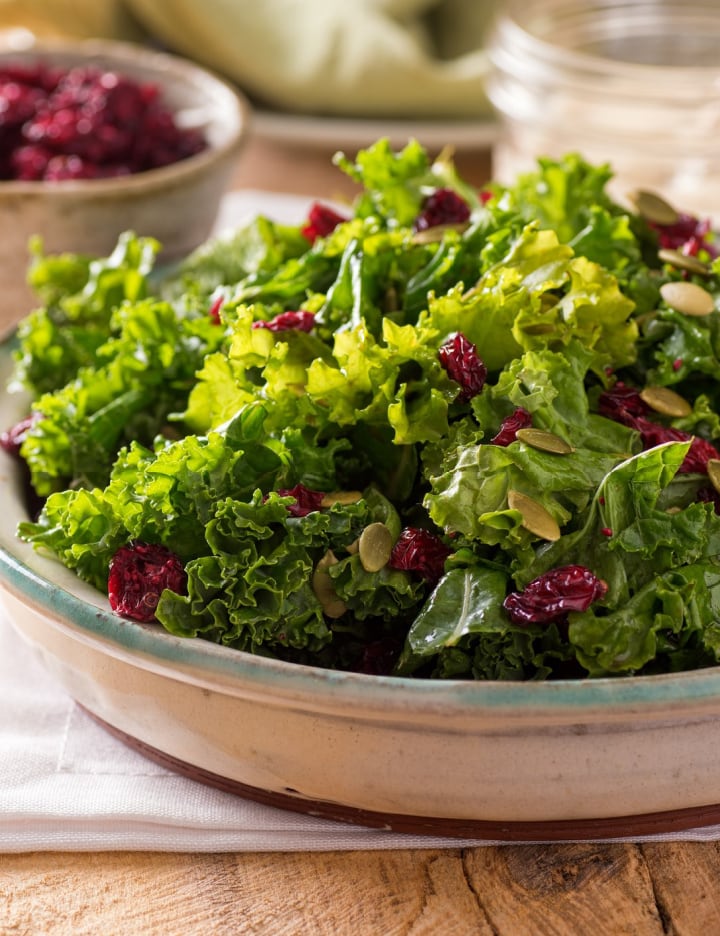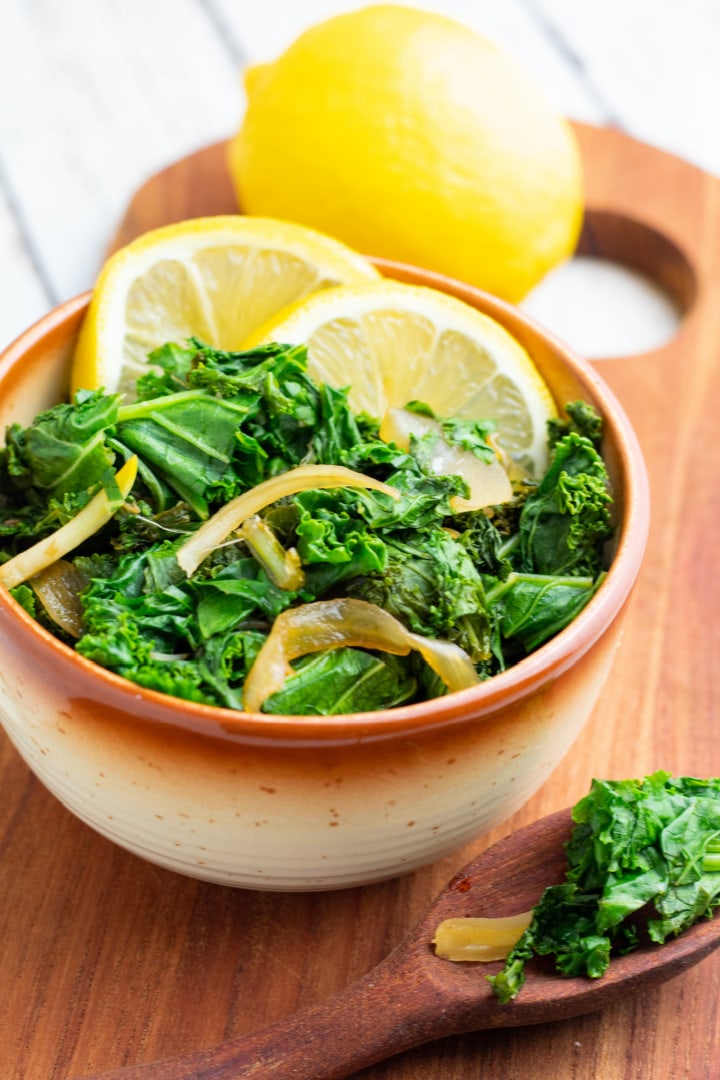Simple Kale Salad Recipes
Looking for a way to add more protein, calcium, and fiber to your diet? There’s no better way to do that than with these easy Kale Salad Recipes.
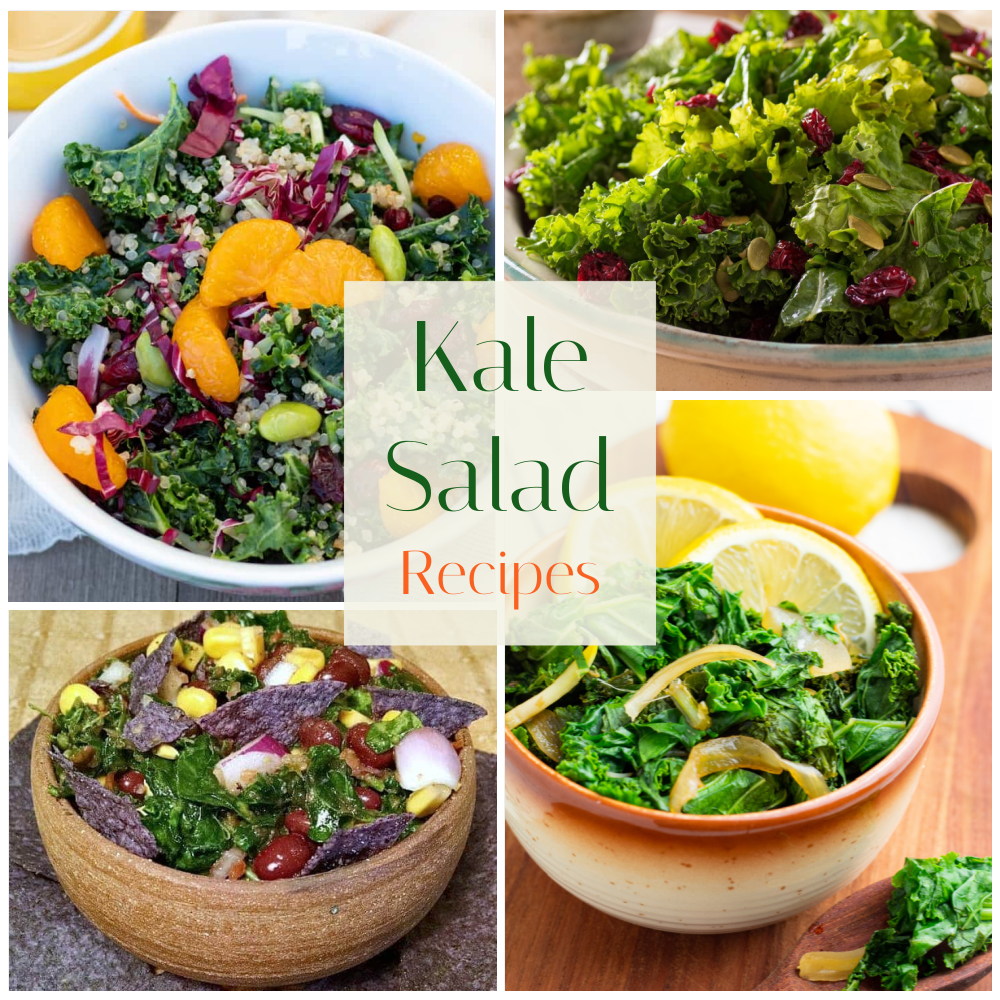
When prepared correctly, kale can be absolutely delicious! Whether roasted to crispy perfection or sautéed with some garlic and lemon, it has a rich, savory flavor that pairs well with so many dishes. Not only is it tasty, but kale is also packed with nutrients like vitamins A, C, and K, making it a fantastic boost for your health!
Common types of kale
Kale comes in several varieties, each with its own unique texture, flavor, and best uses. Whether you’re making a fresh salad, hearty soup, or crispy chips, choosing the right type of kale can make all the difference.
Experimenting with different types can help you find the perfect kale for every dish! Here are the 4 most common types of kale and their best uses:
- Lacinato Kale (Dinosaur/Tuscan Kale): Dark, flat leaves with a tender texture and mild flavor. Perfect for salads, soups, and sautéing.
- Curly Kale: Bright green with tightly curled leaves and a slightly bitter taste. Great for kale chips, smoothies, and as a garnish.
- Red Russian Kale: Flat, slightly jagged leaves with purple stems and a sweeter, delicate flavor. Ideal for raw salads and light cooking.
- Baby Kale: Young, tender leaves with a mild taste. Excellent for fresh salads, wraps, and smoothies.
Nutrition in kale
Of all the healthy greens, kale is king! It is among the most nutrient-dense foods on the planet.
- Rich in Nutrients: Kale is packed with vitamins A, C, and K, along with minerals like calcium, potassium, and magnesium. It’s a nutrient-dense food that supports overall health and well-being.
- Supports Bone Health: Thanks to its high calcium and vitamin K content, kale helps maintain strong bones and supports proper blood clotting.
- Boosts Immunity: With its impressive vitamin C content (more than an orange gram-for-gram), kale strengthens the immune system and promotes healthy skin.
- Powerful Antioxidants: Kale is loaded with antioxidants like quercetin and kaempferol, which help fight inflammation and protect against chronic diseases like heart disease and cancer.
How to prepare kale for salad
Kale has been called the angry lettuce, because is it much more fibrous and less delicate than say baby spinach, romaine, or other leafy greens. The good news is that you can eat kale raw in a salad with one easy trick.
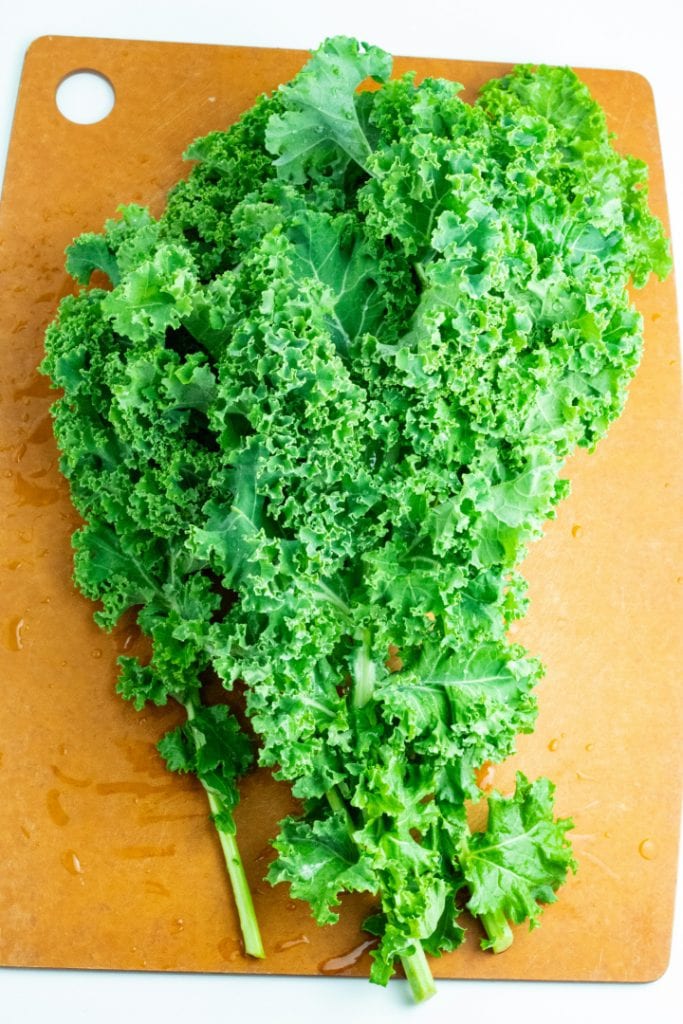
I have found that massaging kale with lemon or orange juice and a little sea salt makes it much more tender and flavorful. And who can blame it? We all could use a little massage to soften our attitude every now and then!
Surprisingly, it only takes about 2-3 minutes.
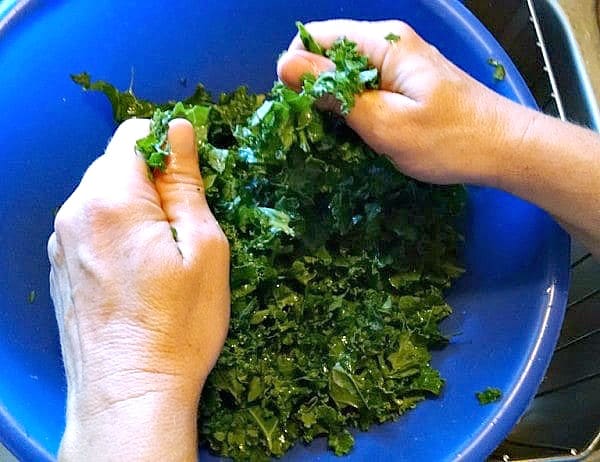
Though the stems are edible, they are the most fibrous part of the plant, so I advise taking them out to make a more delicate dish.
One thing I’ve noticed with the pre-cut kale in bags is that the leaves are sliced horizontally which causes the stems to be included in them. The stems are so fibrous that it’s best to take them out for most recipes.
Those cut bags of kale are great for things like smoothies, but not so much for raw kale salad. I always buy the whole leaf kale and de-stem it, because it only takes a few minutes.
The fastest way to destem kale
Destemming is not difficult and doesn’t even require a knife or scissors.
To strip out the stems, simply grasp a kale leaf with one hand by the stem. Wrap your other hand firmly around the lower end of the leafy part. Slide your hand up the leaf, staying close to the stem, to strip off the leafy part.
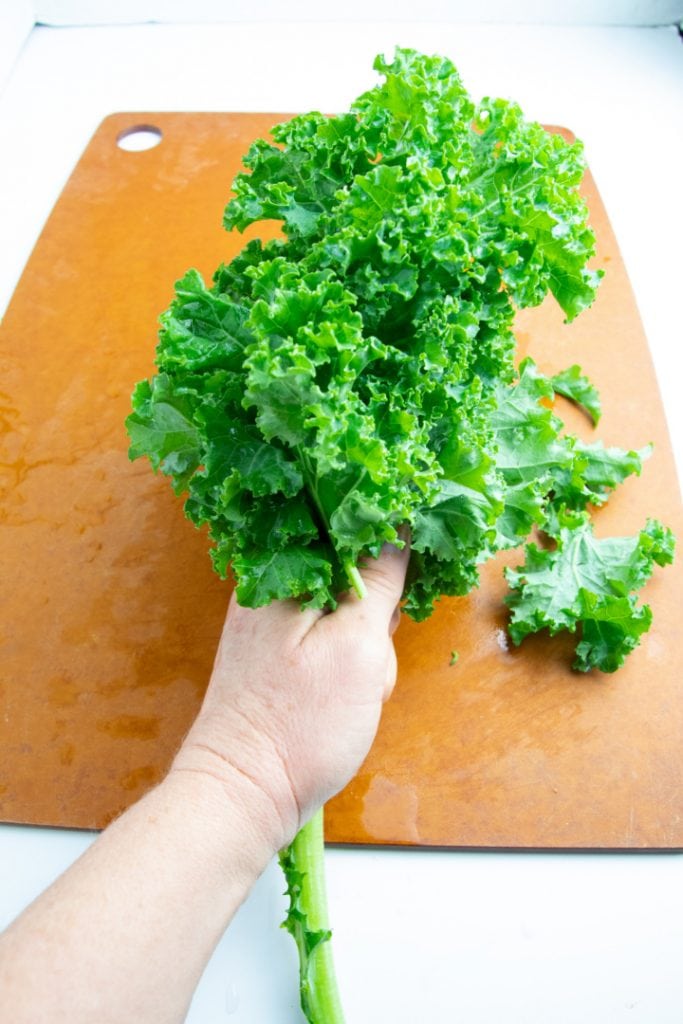
There is even a kitchen tool called Loose Leaf Kale, Chard, Collard Greens and Herb Stripper to make it very simple.
Most kale salads will keep a few days in the refrigerator for a nutritious lunch option or a dinner side dish during the busy work week. For more kale recipe ideas check out our kale category page.
Great way to keep a healthy lifestyle on track and keep you feeling amazing!
Frequently Asked Questions
Both have benefits! Raw kale retains more vitamin C, but cooking reduces oxalates, improving calcium and iron absorption. Steaming is a great way to preserve nutrients while making them more bioavailable.
Yes! Kale contains about 2.9 grams of protein per 100 grams
Kale is an excellent plant-based source of calcium, providing about 150 mg per 100 grams (raw). Plus, it’s low in oxalates compared to spinach, making its calcium easier to absorb.
Massaging kale with a little lemon juice or vinegar helps break down its fibers and reduce bitterness. Cooking or pairing it with sweet or tangy ingredients (like apples or cranberries) can also balance the flavor.
Simple Kale Salad Recipes
Looking for a way to add more protein, calcium, and fiber to your diet? There’s no better way to do that than with these easy kale salad recipes. Click on each of the photos, recipe titles, or 'Get the Recipe' buttons to see full recipes with ingredients, measurements, instructions, and a print button.
This Kale Quinoa Salad with Orange Miso Dressing is crazy delicious and so easy to make. An amazing nutrition powerhouse salad of kale, quinoa, mandarin oranges, and so much more!
When I teach KickStart Your Health classes for Physicians Committee for Responsible Medicine, this Mexican Kale Salad is one of the favorite recipes. Even a classroom of high school students lined up for seconds, and only 1 out of 25 had ever had kale before!
Kale has been called the angry lettuce, because is it much more fibrous and less delicate than say baby spinach, romaine, or other leafy greens. But, this massaged vegan kale salad demonstrates an awesome trick to calming it down.
This is our favorite way to eat cooked kale, and it's very easy to make! Braised Kale is delicious and power-packed with protein.
About Terri Edwards
Hi guys! I am the content creator behind EatPlant-Based and a licensed Food for Life instructor with the Physicians Committee for Responsible Medicine. I am passionate about sharing healthy recipes and tips to empower others to get healthy. I’m so glad you’re here! Read More…

